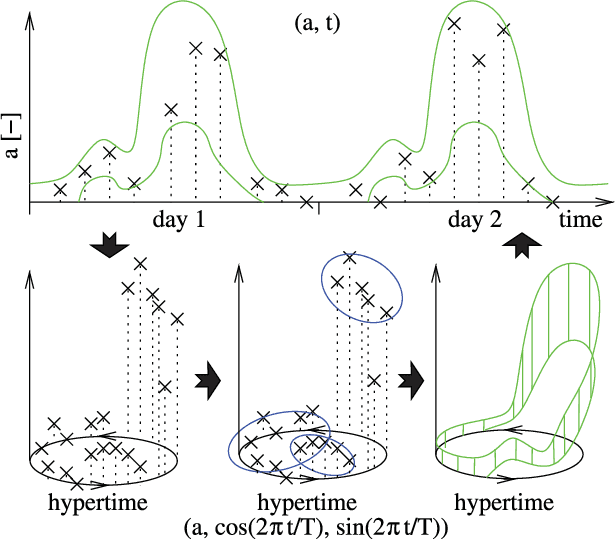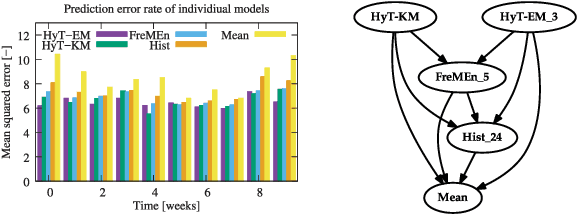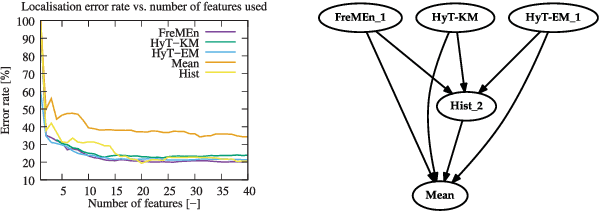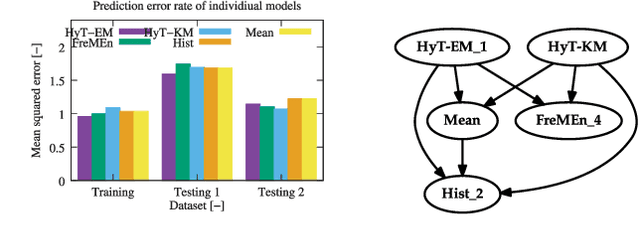Tomas Vintr
Warped Hypertime Representations for Long-term Autonomy of Mobile Robots
Oct 09, 2018



Abstract:This paper presents a novel method for introducing time into discrete and continuous spatial representations used in mobile robotics, by modelling long-term, pseudo-periodic variations caused by human activities. Unlike previous approaches, the proposed method does not treat time and space separately, and its continuous nature respects both the temporal and spatial continuity of the modeled phenomena. The method extends the given spatial model with a set of wrapped dimensions that represent the periodicities of observed changes. By performing clustering over this extended representation, we obtain a model that allows us to predict future states of both discrete and continuous spatial representations. We apply the proposed algorithm to several long-term datasets and show that the method enables a robot to predict future states of repre- sentations with different dimensions. The experiments further show that the method achieves more accurate predictions than the previous state of the art.
Navigation without localisation: reliable teach and repeat based on the convergence theorem
Jul 30, 2018



Abstract:We present a novel concept for teach-and-repeat visual navigation. The proposed concept is based on a mathematical model, which indicates that in teach-and-repeat navigation scenarios, mobile robots do not need to perform explicit localisation. Rather than that, a mobile robot which repeats a previously taught path can simply `replay' the learned velocities, while using its camera information only to correct its heading relative to the intended path. To support our claim, we establish a position error model of a robot, which traverses a taught path by only correcting its heading. Then, we outline a mathematical proof which shows that this position error does not diverge over time. Based on the insights from the model, we present a simple monocular teach-and-repeat navigation method. The method is computationally efficient, it does not require camera calibration, and it can learn and autonomously traverse arbitrarily-shaped paths. In a series of experiments, we demonstrate that the method can reliably guide mobile robots in realistic indoor and outdoor conditions, and can cope with imperfect odometry, landmark deficiency, illumination variations and naturally-occurring environment changes. Furthermore, we provide the navigation system and the datasets gathered at http://www.github.com/gestom/stroll_bearnav.
* The paper will be presented at IROS 2018 in Madrid
 Add to Chrome
Add to Chrome Add to Firefox
Add to Firefox Add to Edge
Add to Edge